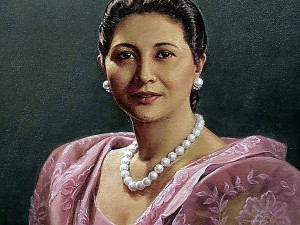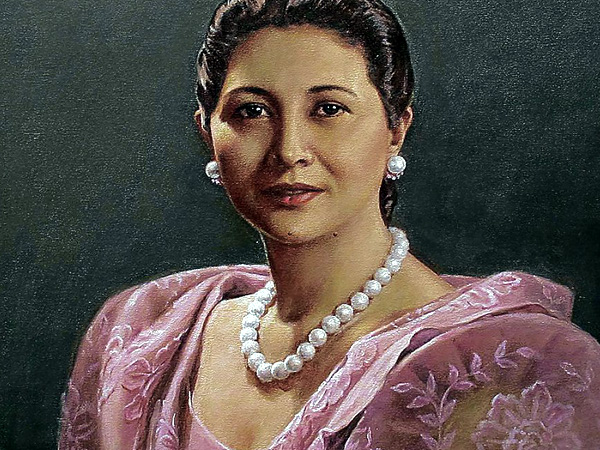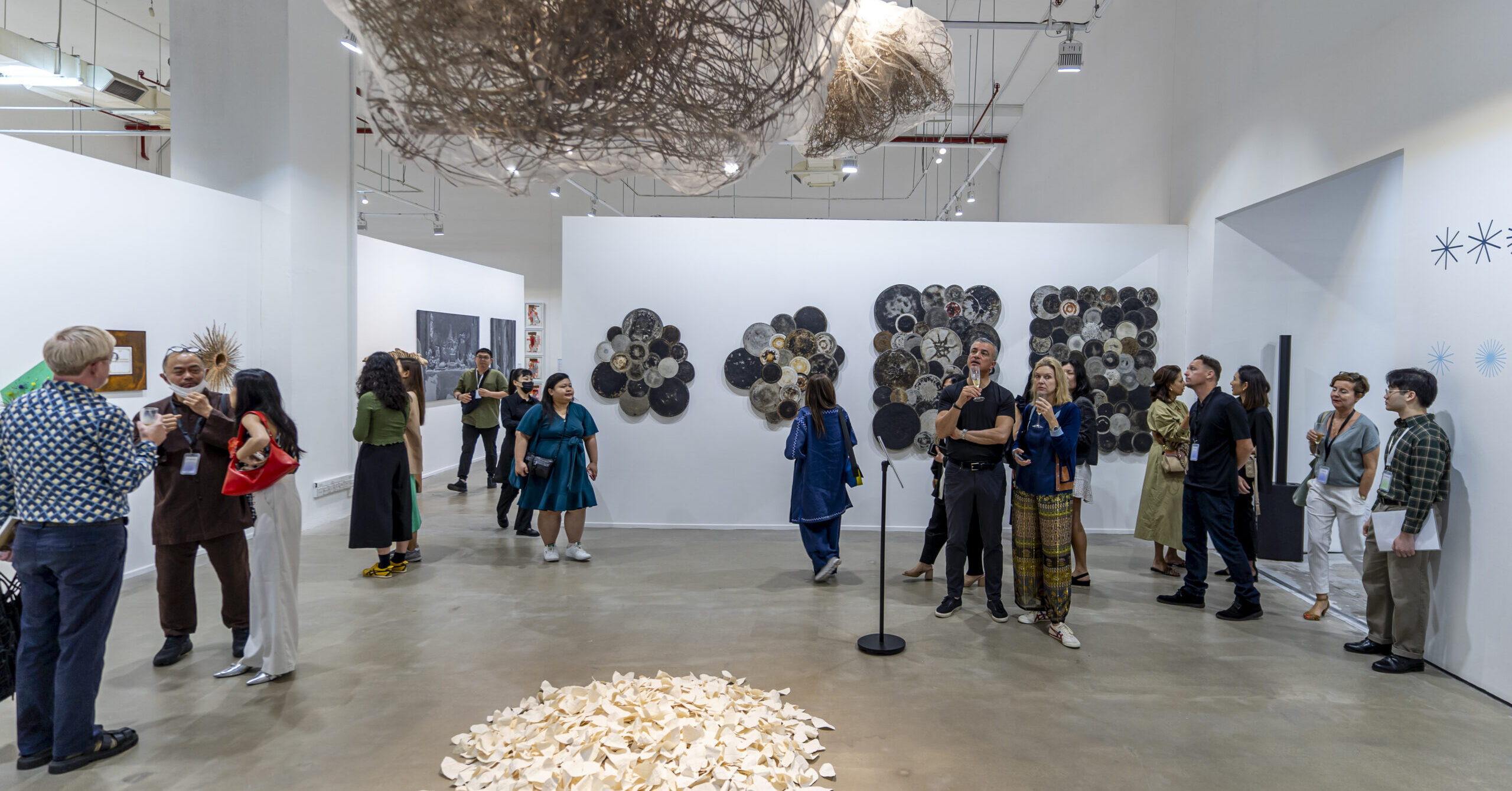
In a generation rife with high technology but low on verbal communication, a time inundated by Postmodernism and Abstract Expressionism, Conceptual and performance art, heady definitions of contemporary art and postcolonial discourse, the art of portraiture seems to have gotten buried in a haze of paint splashes, drips, swipes and impasto.
Portraiture, because of its straightforward technique and illustrative and academic quality, has oftentimes not been considered nothing more than a pretty picture, not qualifying as “serious” art.
Perhaps. Yet there are portraits, and there are portraits. Consider the works of Holbein, Dürer, Velasquez, Gainsborough, even Rembrandt, and the rest of their ilk, who in their time were dismissed as “court” painters; then, at the crossroads of modernism, their counterparts were condescendingly labeled as “vogue” or “society” painters.
Rafael del Casal is one of those artists who remains unfazed by such labels, though he has, all this time, been kept a closely guarded secret by those who have known him. It doesn’t help that Del Casal hardly holds exhibits of his work. They come few and far between.
Women portraits
But this month at Finale Artfile in Makati, in the small exhibition room on the second floor, 10 commissioned portraits of women have hung for barely a month, each with the artist’s delicate insight into their respective personalities. Of these, I have singled out five that distinctly point to Del Casal’s perceptiveness in capturing the sense of a moment.
“I want you to paint the woman I married,” Jolyon Tiglao instructed Del Casal when commissioning a portrait of his wife, Carmen. Though she herself would have preferred a portrait of her contemporary self, Del Casal fulfilled the husband’s wishes, producing a graceful Carmen in a pink terno, taken in the prime of her dancing days with the Bayanihan, her graceful posture made even softer by the transparent scarf held wafting above her head.
In direct opposition is the stiff and tense stance of Luisa Viray. Her long graceful fingers with an open fan consciously and deliberately grasp at it, instead of holding it nonchalantly, indicated by Del Casal’s delineation of her knuckles and veins. Her eyes peer at something from a side glance and her collar bones and shoulders are clearly not devoid of a tension only she, and perhaps Del Casal, is privy to. A wall’s vertical line alongside Viray only emphasizes the intentional rigidity Del Casal wishes to put across. The selection of a terno of giant red coral prints with coordinated pearl and red coral earrings is clearly contemporary, marking Viray as a youthful matron in a complex society, as opposed to Tiglao’s more playful and flirty countenance.
Classic
Classic in pose, technique and coloration is the portrait of Josephine Murphy Cojuangco. She is elegant and serene and cameo-like. Hers is classic Del Casal as I recall his art to be. A gentle shade of powder pink on an embroidered terno, gradated robin’s eggs pearls and matching earrings, wavy, mervined hair pulled back into a soft chignon, Del Casal captures a nostalgic old worldliness through his use of light, shadow and color palette.
Next to Cojuangco is Rosario Encarnacion, an architect. A simple no-nonsense collarless pineapple fabric Filipiniana top, cropped hair, and you know she is a working lady in a man’s job. And yet, Del Casal knows that underneath the feisty exterior is a sensitive soul, which he captures in her eyes.
I asked Del Casal what the images dancing atop Gilda Cordero-Fernando’s head were. “It wouldn’t be Gilda without them,” he said, referring to the wolf’s silhouette blurred by bubble-like shapes making a mystical halo around Gilda. Her expression is otherworldly because to those who have experienced Fernando, she is all that.
Painting from pictures, some as small as thumbnail photographs, it is wondrous that he captures the slightest nuances that breathe life into his subjects. Sometimes, he even has to work from faded photographs, or even badly photocopied images, and yet he nary misses a feature.
American personages
Such was the case when he was commissioned to paint American personages who played important roles in the American occupation. Among them is Charles “Chuck” Parsons, who made secret trips to Australia, smuggling arms for the guerrilla forces in the Philippines; or Claire Phillips, the alluring American spy who, under the guise of an Italian proprietor-hostess of the high-end Tsubaki Club, got information from her Kempeitai clientele and passed it on to American forces by smuggling the information in her brassiere, earning her the nickname “High Pockets.” The Chancery at the American Embassy is named in her honor.
Reconstructing photographic details for Del Casal is not guesswork. Not formally trained in painting, it is sheer talent alone that drives him to make his pictures come alive, aided by a deep sensitivity of “people knowledge” and historical periods both tangible and intangible. This he gained through a fruitful apprenticeship with National Artist for Theater Salvador Bernal.
Perhaps the closest Del Casal has come to some form of formal training in painting was at a workshop conducted by Eric Hebborn, a self-confessed master forger, whose work remained undetected even by art experts, until his published confession, “Drawn to Trouble.” It was during a visit to Manila that Del Casal met Hebborn, whom he described as a patient and kind painting teacher.
Religious painter
The eldest grandchild of what he describes as “a pious grandma” attuned him to the modes and mores of a gentler period, and also made him aware of ecclesiastical art. His work that first caught my attention were a series of cards in Ayala Museum with the most delicate angels in Filipiniana garb drawn either in red or sepia pencil.
Earlier, he had made a Filipino crèche at Intramuros called “Ang Pagdadalaw ng Tatlong Hari,” with the Holy Family in turn-of-the-century garb, and the angels in clothes of an earlier period. His first exhibit in 1979, in Corito Kalaw’s Sining Kamalig, was of saints.
Ongoing is his work at Cathedral of the Immaculate Concepcion in Lantana Street, Cubao, where the neo-Romanesque structure has been undergoing renovations since 2002.
On the transept crossing are the four evangelists enveloped by a Byzantine blue sky with six-point gold stars. “They wanted a retablo which is Baroque, so to unify the look, I painted in the neo-classical style,” Del Casal said.
For anyone who is not in the know, that wouldn’t matter. But to Del Casal, whose particular attention to art periods and their nuances, and which periods are compatible, it is precisely the point.
Knowing how to draw considering the minutest of details: Del Casal is shamelessly up front, much to our delight.














































